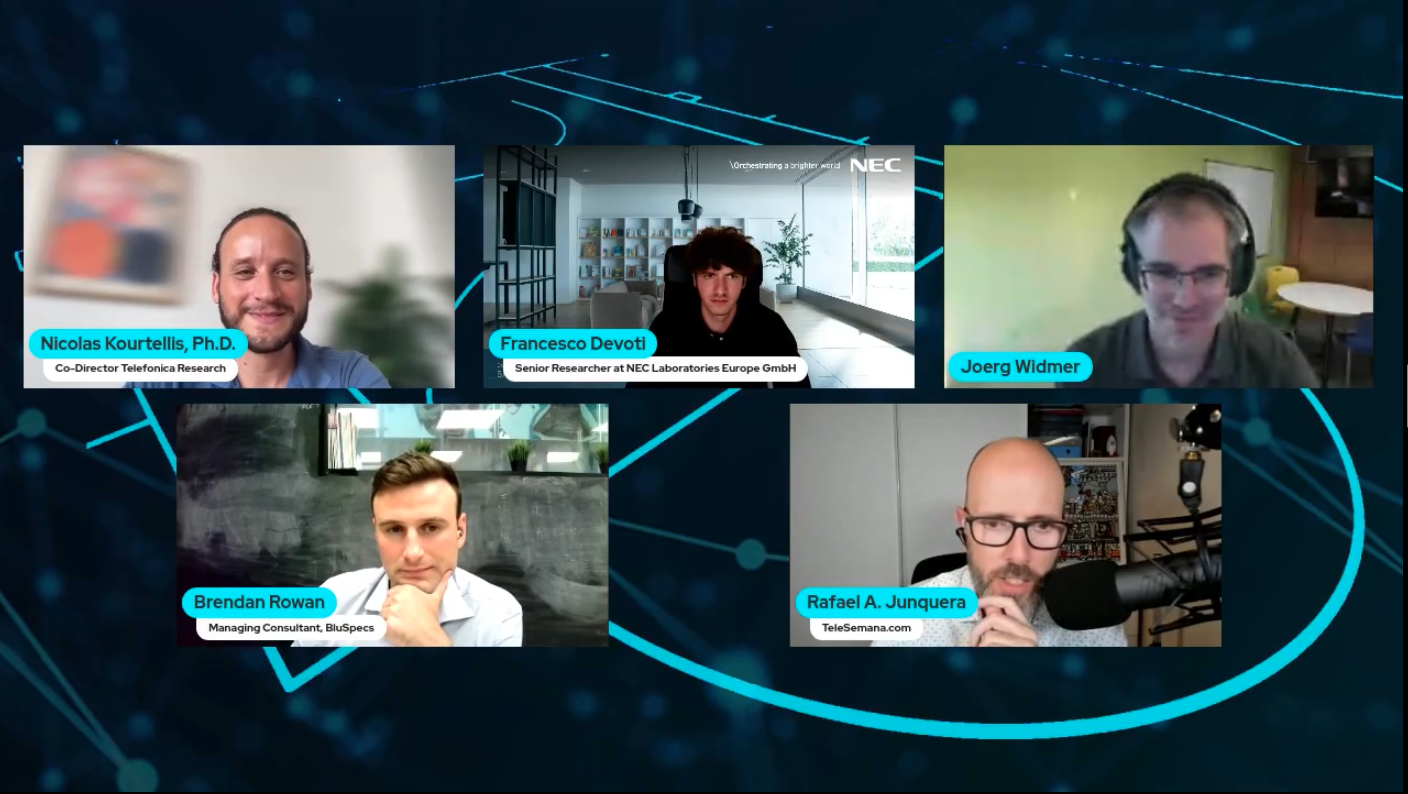TeleSemana LinkedIn Live event: What is and why is ENABLE 6G important?
The ENABLE 6G team delved into the key elements shaping the next generation of networks: Reconfigurable Intelligent Surfaces (RIS) and the indispensable role of Artificial Intelligence (AI) in the development of 6G networks at last week’s Telesemana LinkedIn Live event. During the discussion held by one of the largest telco news outlets in Latin America, we had the opportunity to share the trends and challenges faced by 6G but also how RIS devices extend coverage and enhance connectivity, while AI empowers networks with intelligence, efficiency, and boundless potential.
At the session:
Rafa Junquera; Host, Co-Founder & Editorial Director | TeleSemana.com
Joerg Widmer; Research Director | IMDEA Networks
Francesco Devoti; Research Scientist | NEC Lab Europe
Nicolas Kourtellis; Co-Director | Telefónica Research
Brendan Rowan; Managing Consultant | BluSpecs

RIS Devices
TeleSemana’s host, Rafa Junquera started the interview by introducing a series of thought-provoking questions, setting the stage for insightful discussions. Rafa explored the topic of Reconfigurable Intelligent Surfaces (RIS) and started by asking Francesco Devoti intriguing questions to learn more about the novel study.
Reconfigurable Intelligent Surfaces introduce a paradigm shift in wireless communication. They are passive, mirrored, surface devices that can be programmed to reflect radio waves strategically, which enables extended coverage, reduced interference, and enhanced quality of the network.
“RIS devices are a new weapon in the arsenal that can be deployed in the network” – Francesco Devoti
How do RIS devices actually work?
When a radio wave hits an RIS, it is scattered in different directions. The metamaterials in the RIS are designed to control how the radio waves are scattered. This can be done by adjusting the properties of the metamaterials, such as their thickness, shape, and polarisation. The ENABLE 6G team are researching ways to control and direct these signals directly to the required area to boost the connectivity of the end user.
“The reason they’re making these RIS devices is so that they can reach wider areas and denser areas.” – Francesco Devoti
RIS could be used to extend the range of coverage of 6G networks, making them available in more remote areas.

The Role of AI in 6G Networks
Rafa also quizzed Brendan on the role of AI in 6G networks and what changes should we see from the new network. Artificial intelligence (AI) is already playing a significant role in the next generation of networks, and it is expected to become even more important by the time 6G is developed, which is likely to be within the next 10 years.
“If we’re looking at where technology will be in 2030, we already have an indication of where the demand on the network will come, which will be from an increase in data processing and particularly the rise of edge computing.” – Brendan Rowan

AI can also be used to create new services and applications that are not possible with current networks. For example, AI can be used to develop new traffic management algorithms that can optimise the flow of data through networks. This can help to improve performance and reliability, and it can also help to reduce congestion. Additionally, it could be used to automate tasks such as network planning, resource allocation, and fault detection. This can free up human resources to focus on more strategic tasks, and it can also help to make networks more efficient.
“Our expectation is that we’re expecting an autonomous, self-aware and also self-configuring network” – Brendan Rowan
The future of 6G networks is bright, and AI is a key part of that future. AI can help to make networks more intelligent, efficient, and reliable. The team at ENABLE 6G are studying how they can use Artificial Intelligence and machine learning to optimise 6G’s capabilities.

The project’s pioneering work on Reconfigurable Intelligent Surfaces (RIS) and the instrumental role of Artificial Intelligence (AI) in 6G networks points towards a promising future in telecommunications. With RIS devices expanding coverage and with AI driving network efficiency, ENABLE 6G strives to revolutionise wireless communication, envisioning a future that allows for seamless and uninterrupted connection through 6G. To hear more about ENABLE 6G, you can watch the full TeleSemana interview here.
We would like to thank TeleSemana for providing ENABLE 6G with the opportunity to showcase their research on their channel, and we hope that the viewers learned some valuable insights into the future of 6G.
